Biology > QUESTIONS & ANSWERS > NYS EMT-B State Exam Written Study Guide 2022 with COMPLETE SOLUTION (All)
NYS EMT-B State Exam Written Study Guide 2022 with COMPLETE SOLUTION
Document Content and Description Below
NYS EMT-B State Exam Written Study Guide 2022 with COMPLETE SOLUTION An EMS Provider responds to a call and finds an 8- yr old female with no pulse or respirations. The patient has a history of ter... minal brain cancer. The family states the last time she as seen alive was 5 mins prior to EMS being called. They also state patient has a DNR oder. In NYS, EMS personnel may accept which of the following DNR instruments as valid? Verbal request from family A. Written non-hospital B. DNR or MOLST form C. Written healthcare proxy D. Written living will - ✔✔Written out-of-hospital DNR OR MOLST FORM Implied Consent exists when a patient is suffering from a life-threatening injury or illness and is: a. Under police custody b. A threat to himself and others c. Under age of 18 d. Unconscious - ✔✔D. unconscious The opposite of distal is a. Superior b. Medial c. Lateral d. Proximal - ✔✔D. Proximal The chamber of the heart that is most muscular and that pumps the most blood into the aorta is the a. Right atrium b. Left ventricle c. Right ventricled. Left atrium - ✔✔B. LEFT VENTRICLE In correct sequence (VERTEBRAE SECTIONS) and number in each section - ✔✔cervical (7), thoracic (5), lumbar (12), sacral (5), and coccygeal (4) The purpose of the first set of vital signs is to: - ✔✔A. establish a baseline for additional evaluations PCR has how many spots for writing vital signs? - ✔✔3 spots When you take the pulse of a patient, you are really a. Counting pressure waves of blood that the heart sends through an artery b. Feeling the swelling of the vein as each wave of blood passes back to the heart c. Noting the heartbeats in the column of blood in a large vein d. Feeling the vibrations of the heart muscles as they push the blood through - ✔✔A. counting the pressure waves of blood that the heart sends through an artery In people whose skin is darkly pigmented, cyanosis is BEST seen by observing a. Mucosal membranes b. Earlobes c. Scalp d. Face - ✔✔A. mucosal membranes You are treating an alert 35-year old trauma patient. You palpate a strong radial pulse of 100. Your partner has taken the patient's blood pressure and advised you that it is 68/32. You should: a. Suspect the accuracy of the pressure reading and reevaluate it b. Accept the reading as accurate c. Ask you partner to retake BP reading again in 15 mind. Treat patient for hypertension immediately - ✔✔A. suspect the accuracy of the pressure reading and reevaluate it yourself A correct statement about diastolic blood pressure is that it is the pressure a. Exists when heart left ventricle is refilling b. Due to the contraction of the ventricles of the heart c. Caused by contraction of the atria of heart d. Caused by relaxation of the walls of the major arteries - ✔✔d. Caused by relaxation of the walls of the major arteries All of the following are symptoms EXCEPT? a. Headache b. Weak pulse c. Chest pain d. Nausea - ✔✔B. weak pulse sign vs symptom - ✔✔a sign is a physical manifestation (objective)- something you can measure symptom is what the patient tells you about the disease (subjective) For a patient with a suspected lumbar spinal injury, the BEST device for moving the patient as a single unit over uneven terrain is the: A. wheeled stretcher B. long spine board C. flexible stretcher D. short spine board - ✔✔B. long spine board Which of the following is the best indicator of the quality of ventilations A. chest expansionB. pupil size C. blood pressure D. skin color - ✔✔A. CHEST EXPANSION What is the best measure of respiration? - ✔✔skin color ventilation vs respiration - ✔✔ventilation- the simple movement of air into and out of the lungs respiration- the exchange of gases between the lungs, the blood, and the tissues of the body Unless additional suctioning time is necessary to clear the airway, an adult patient should be suctioned for NO LONGER THAN A. 5 sec B. 10 sec C. 15 sec D. 20 sec - ✔✔15 seconds During single-rescuer CPR, which of the following ventilation devices would be MOST effective for ventilating a patient A. NRB B. Pocket mask w/ oxygen C. Flow-restricted, oxygen-powered ventilation device (FROPVD) D. BVM w/o oxygen - ✔✔B. Pocket mask with Oxygen because you can maintain a better seal While performing ventilations on an infant or child in respiratory arrest, you should ventilate every A. 5-6 seconds B. 3-5 seconds C. 1-2 seconds - ✔✔B. 3-5 seconds [Show More]
Last updated: 2 years ago
Preview 1 out of 33 pages

Buy this document to get the full access instantly
Instant Download Access after purchase
Buy NowInstant download
We Accept:

Reviews( 0 )
$10.00
Can't find what you want? Try our AI powered Search
Document information
Connected school, study & course
About the document
Uploaded On
Jul 01, 2022
Number of pages
33
Written in
Additional information
This document has been written for:
Uploaded
Jul 01, 2022
Downloads
0
Views
121

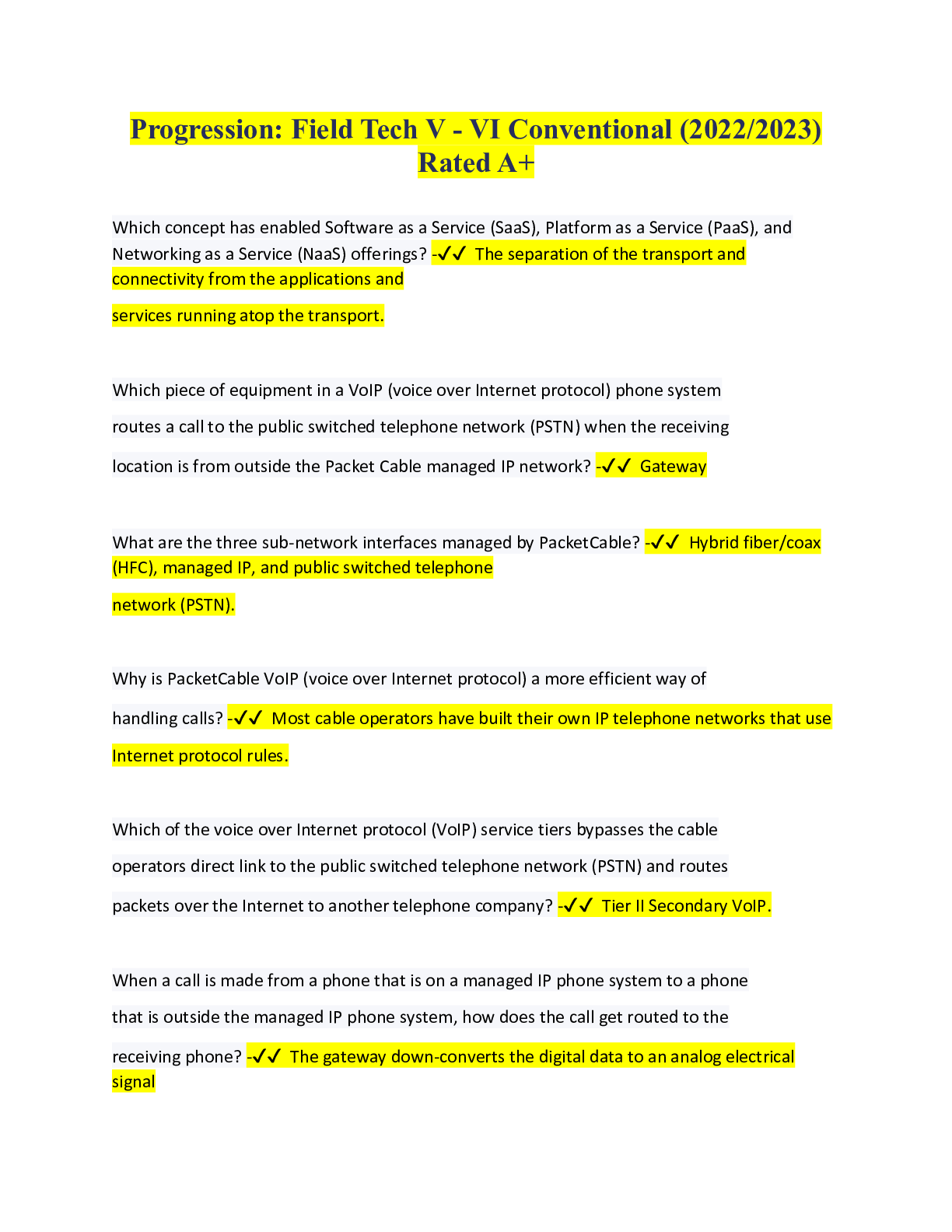

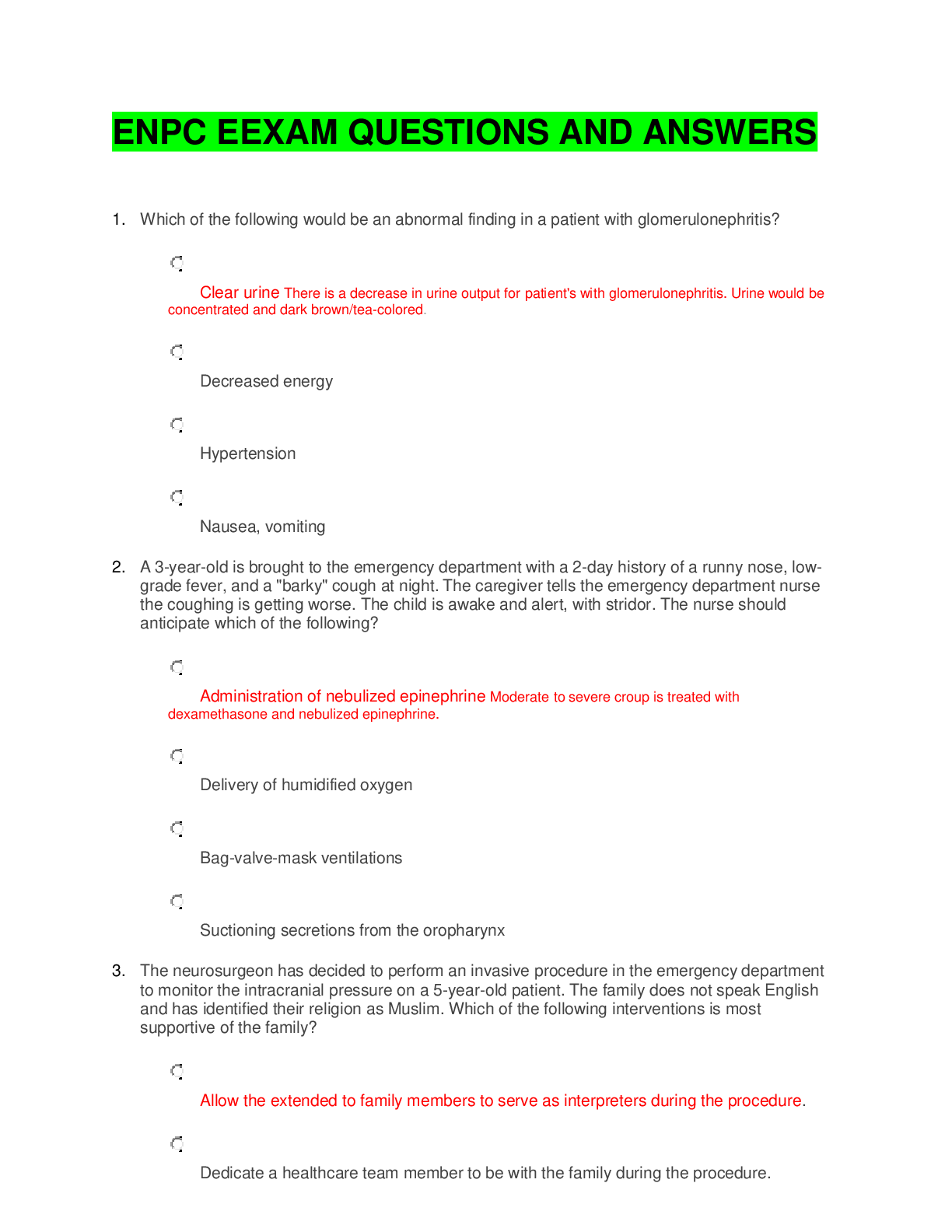
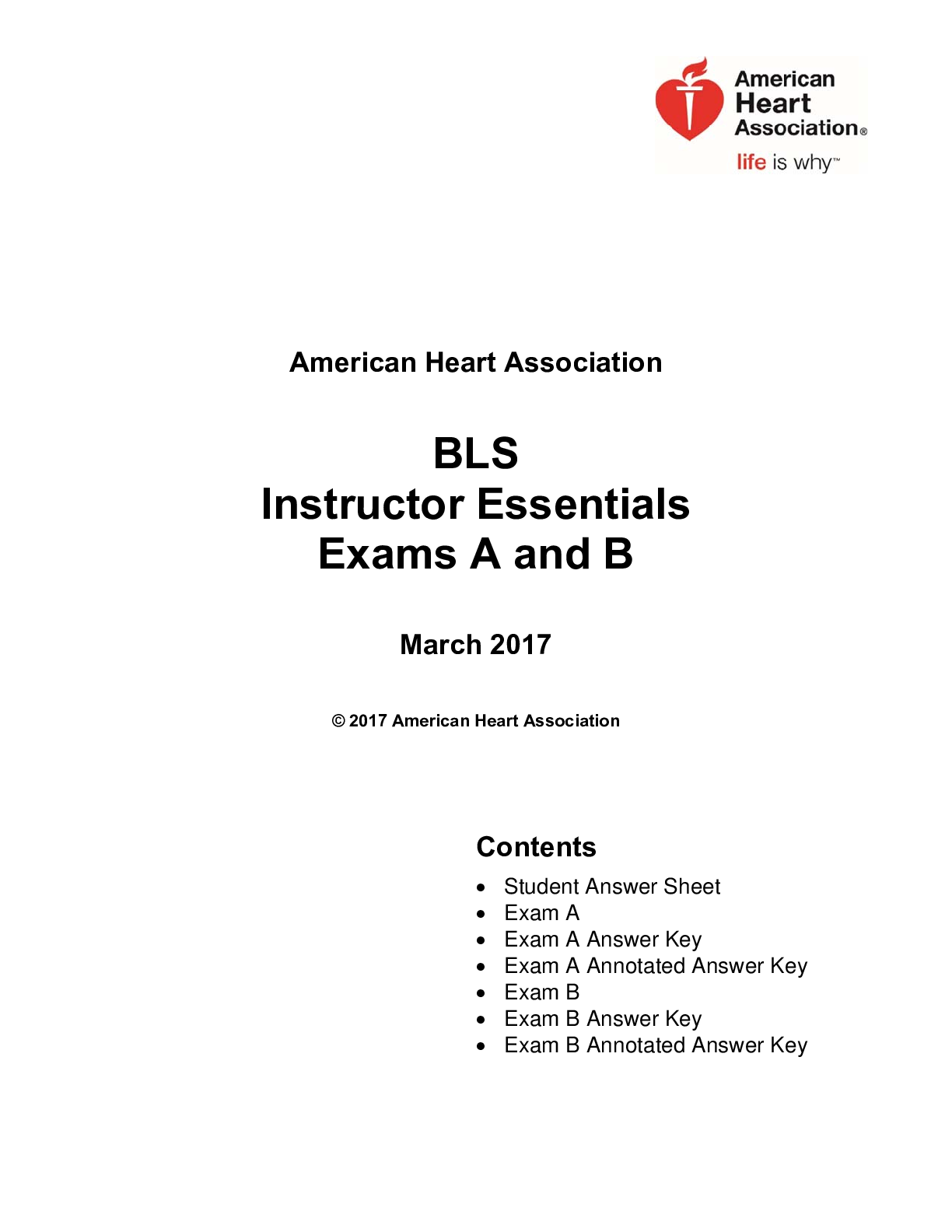

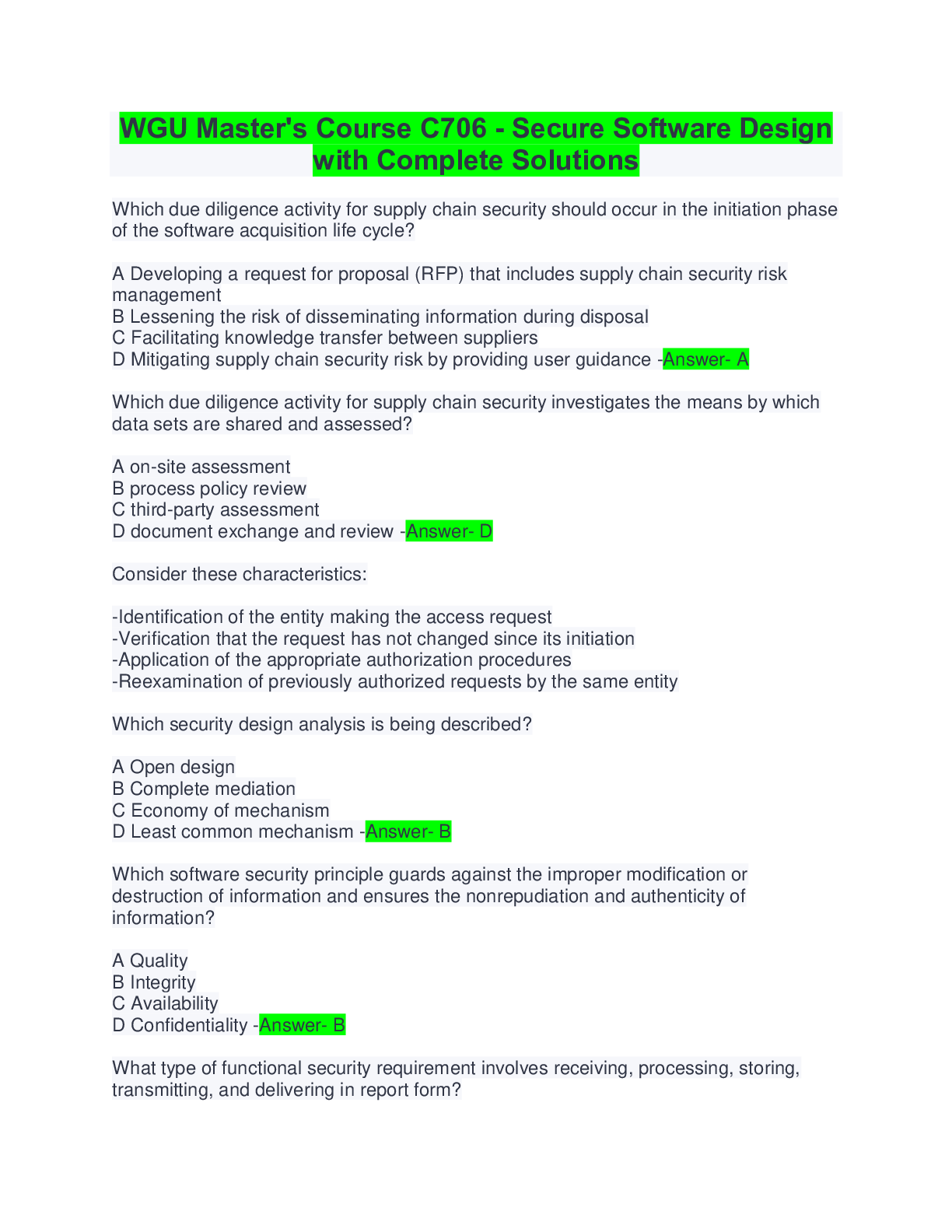

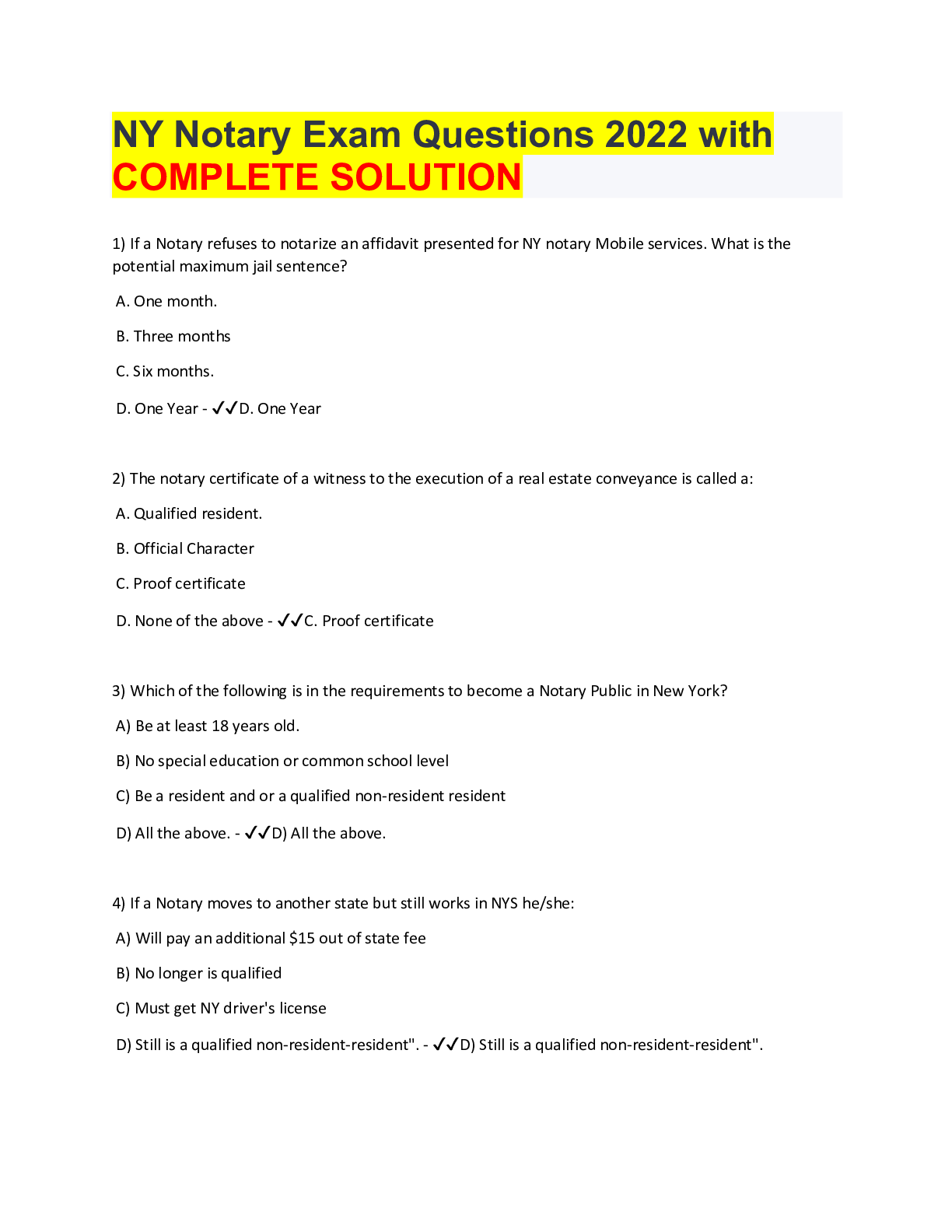
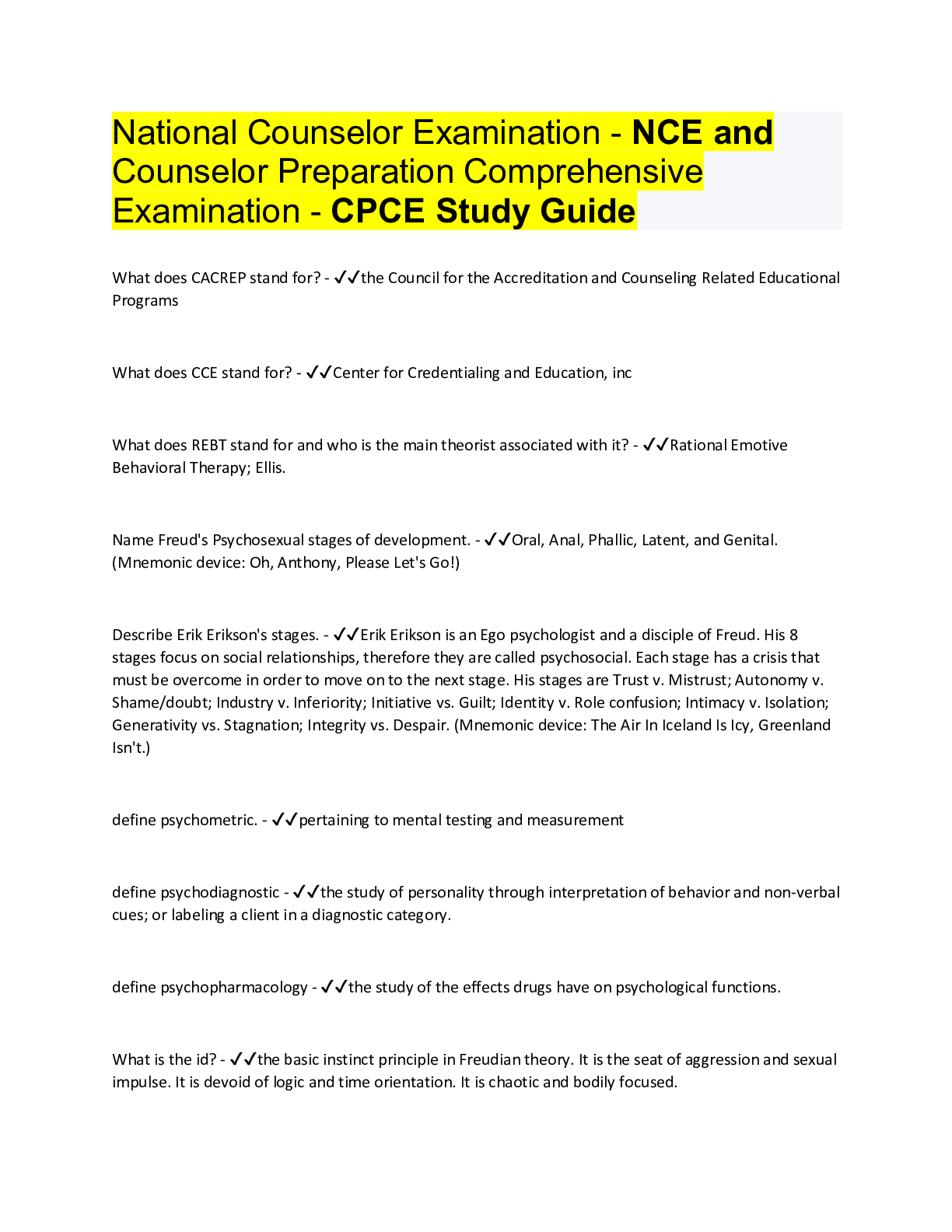

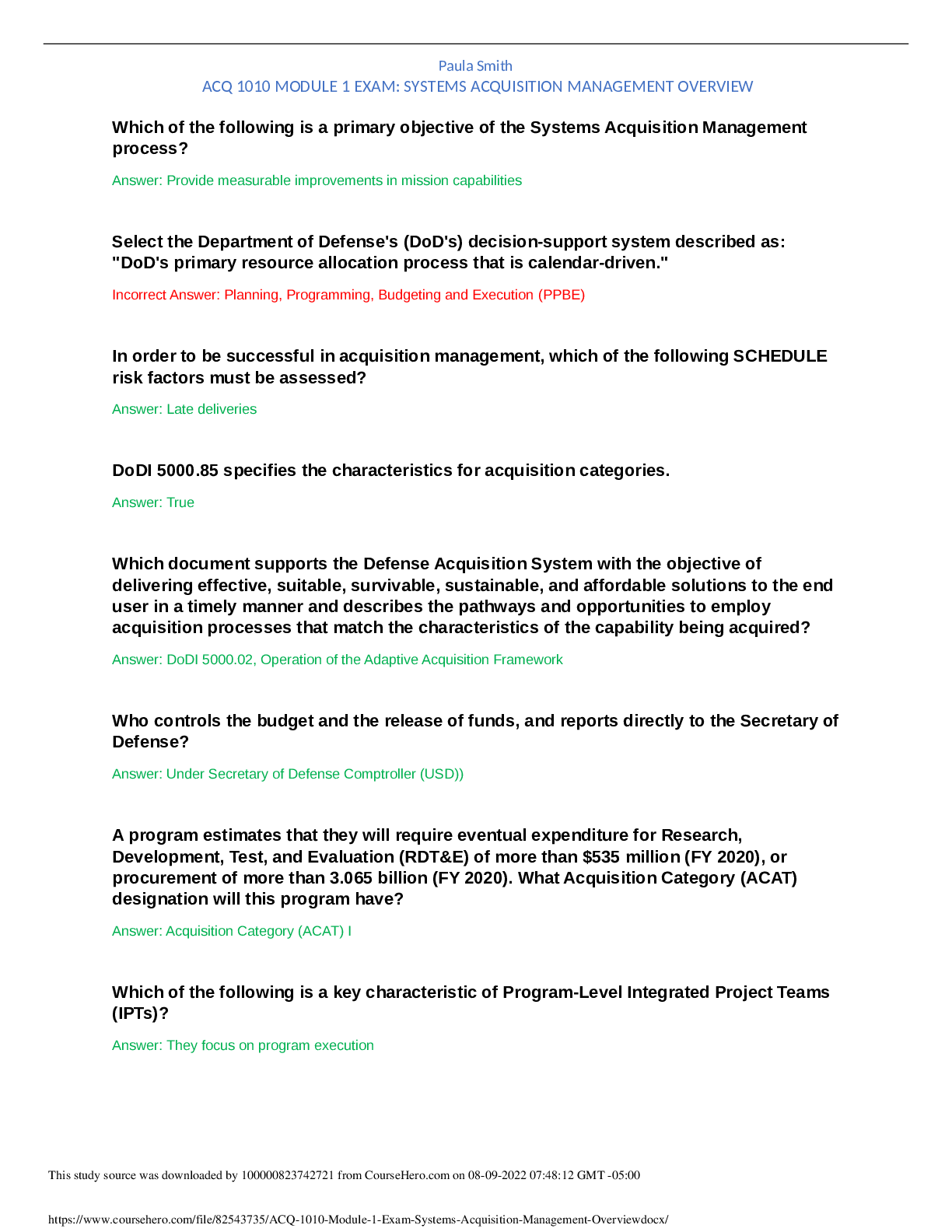
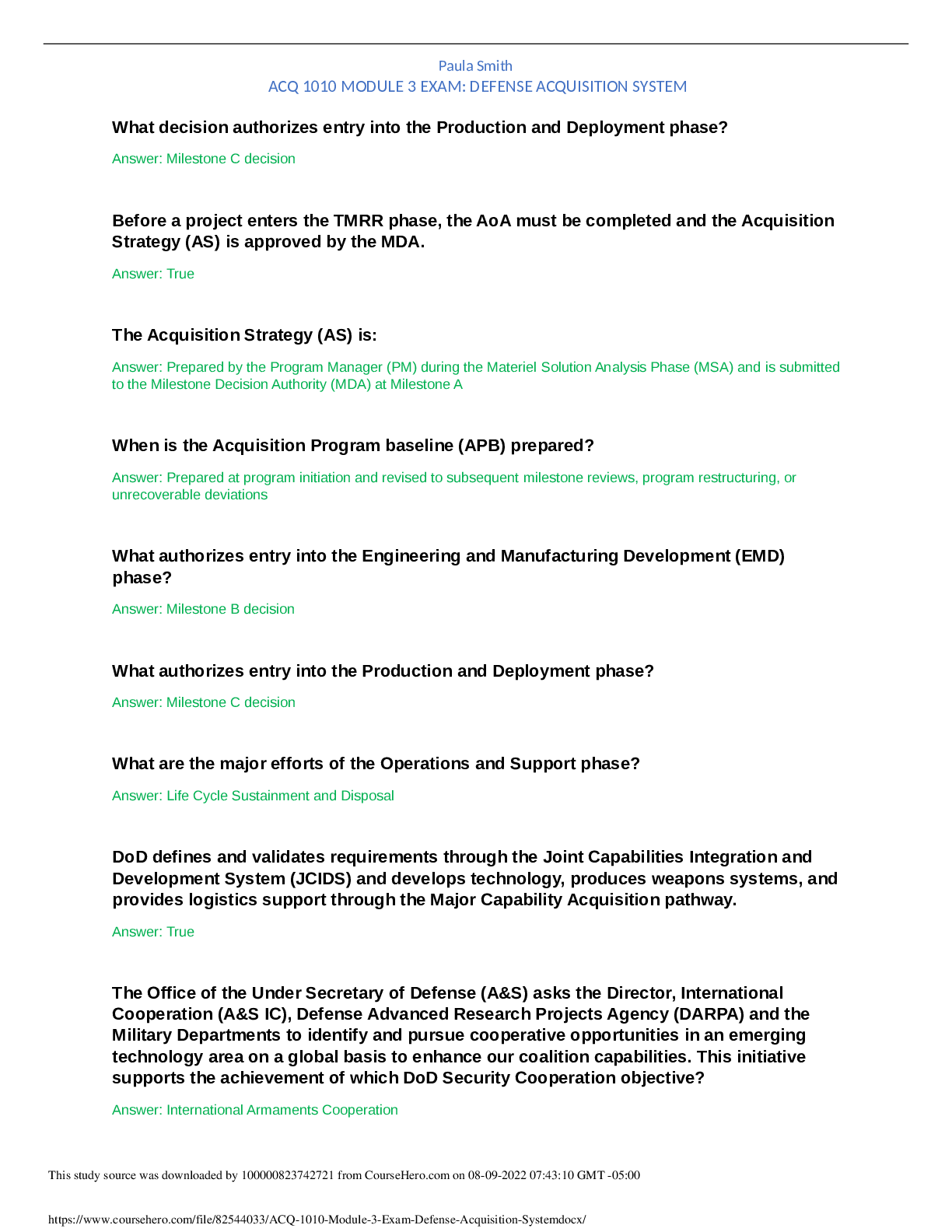


.png)





.png)




